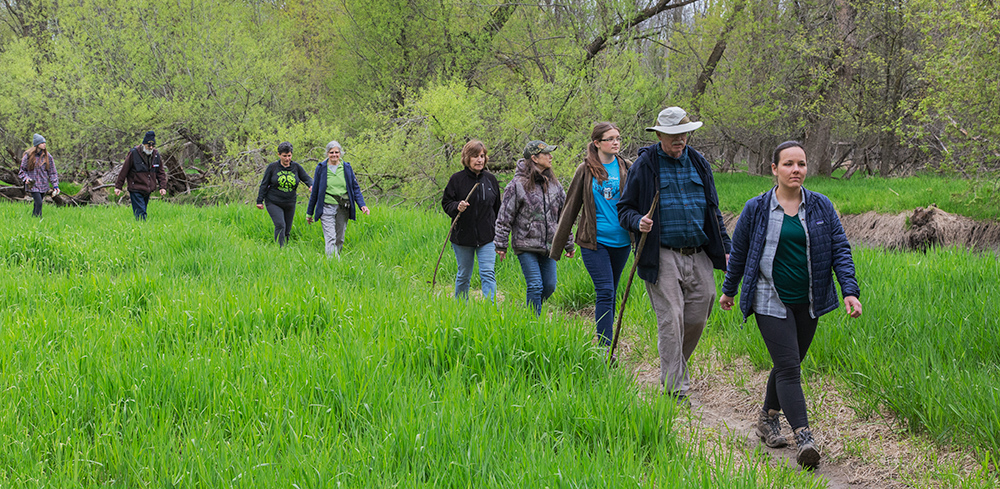
A Jane’s Walk in the Menomonee River Wilderness
May 30, 2019 | Topics: Stories
Story and photos by Eddee Daniel
We trekked along a muddy track, forded streams and encountered wildlife. We peered into the recesses of a broad primeval wetland. We hiked for two hours in the wilderness and never left the city. There were 22 of us at the beginning. Most of us made it the whole way. Here is the story.
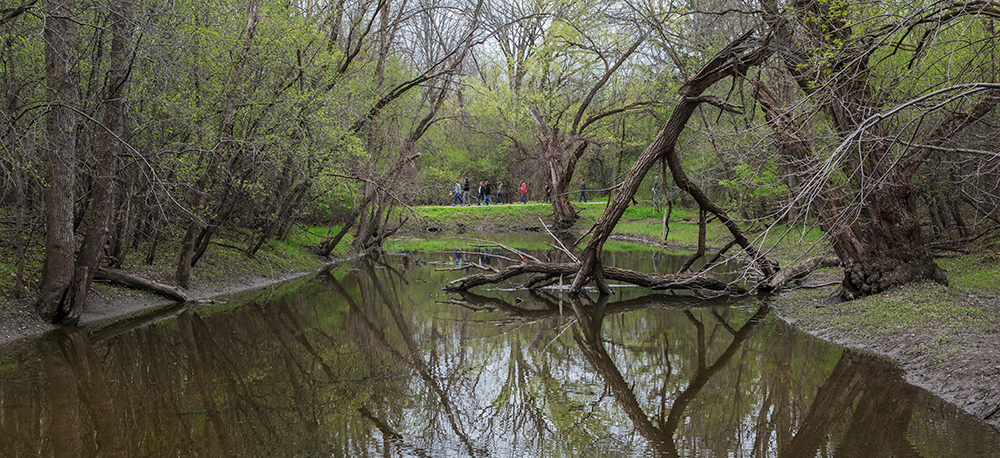
First, if you don’t already know, you may be wondering what a Jane’s Walk is. Jane Jacobs was an influential urbanist and the author of “The Death and Life of Great American Cities.” To celebrate her pioneering efforts and to promote her belief in the livability of cities, Jane’s Walk MKE was organized to encourage people to go out for walks to enjoy and learn about Milwaukee. Throughout the month of May, a series of free, guided walks have been held in locations all around the city, led by whoever chose to guide one.
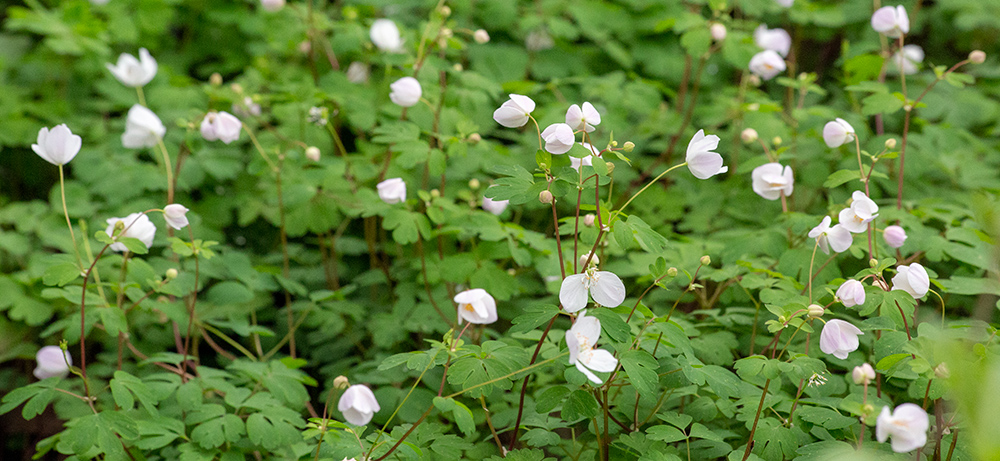
I wanted to lead a Jane’s Walk because I passionately believe that the livability of Milwaukee is greatly enhanced by its wealth of parks and natural areas. I chose one of my favorite urban wilderness routes, a loop along both sides of the Menomonee River between Capitol Drive and Hampton Avenue. I am attracted to this stretch because of its relative wildness and the opportunity it offers to “get away from it all” without going very far.
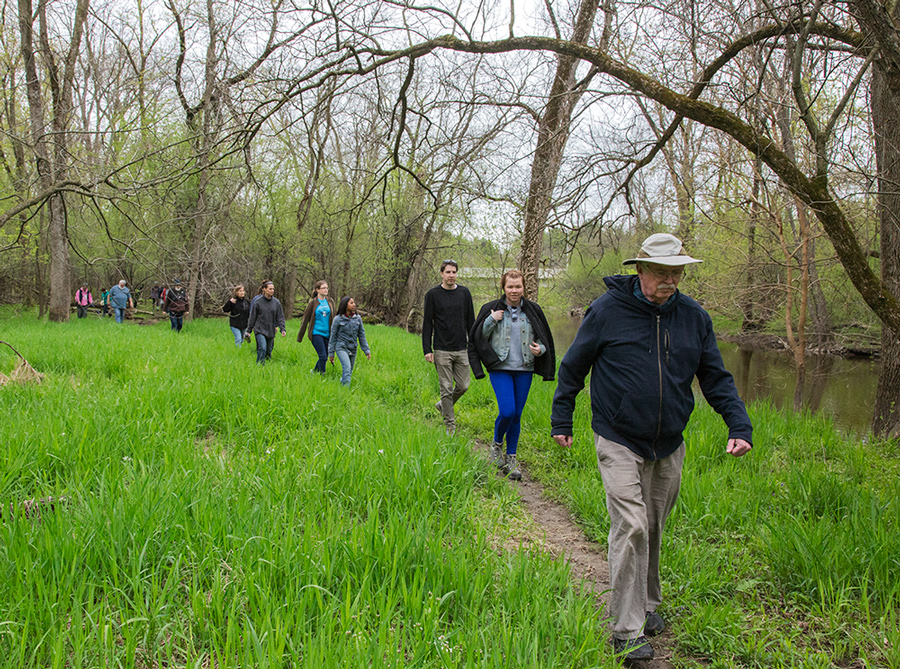
We assembled on the Menomonee River Parkway at Capitol Drive. Making our way down a narrow track into the forest next to the river we were immediately transported into a different realm. As houses and roads disappear, the sound of traffic recedes, and the canopy closes over your head, you find yourself immersed in nature. For me it elevates the spirit and nourishes the soul.
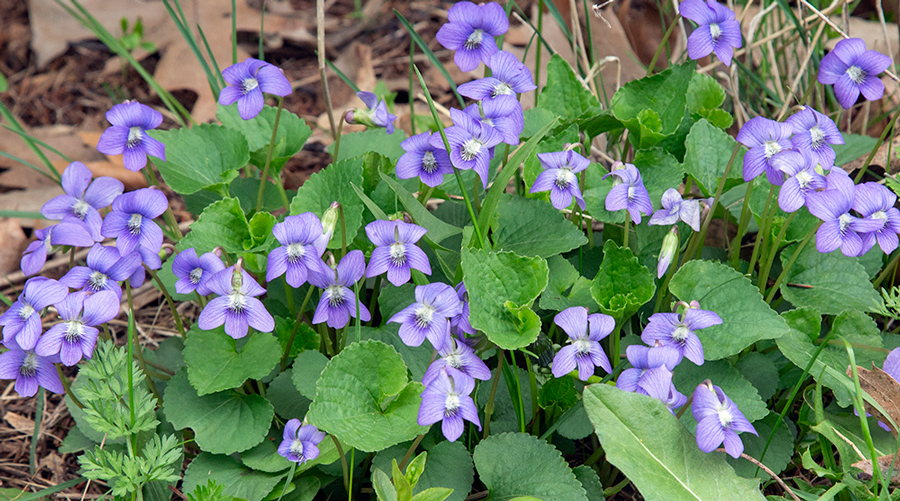
My hope is that everyone felt that way. Of course, along with a delightful array of wildflowers, we had to contend with the mud. Nature can be sublime; it can also be messy. We wouldn’t know it until the end but this first stretch of the walk was the muddiest. No one turned back though and right away we witnessed how a living river behaves, with dramatic examples of erosion, logjams impeding the flow, and clearly observable shifts in its channel over time.
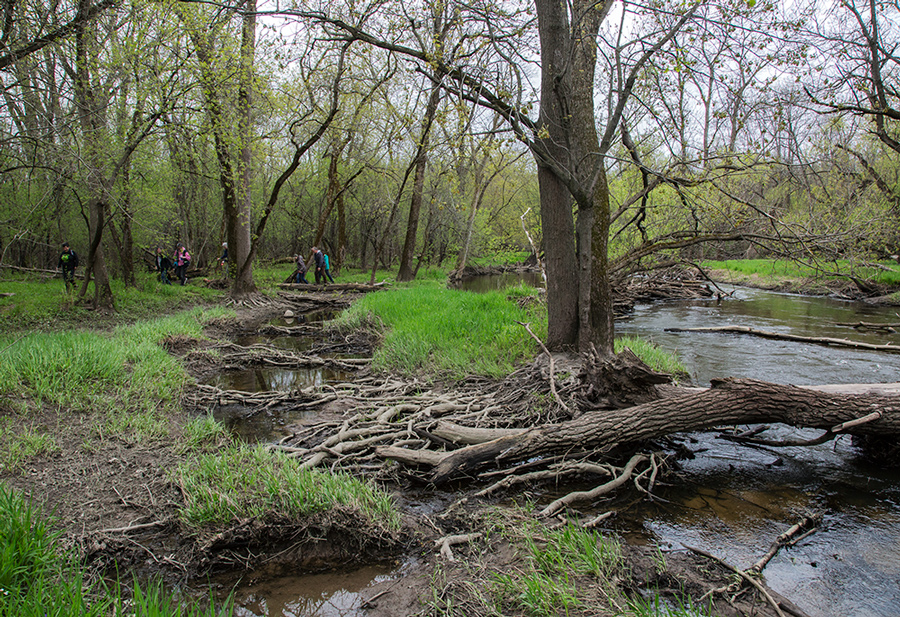
When we reached a point where the riverside trail dipped into the high spring flood waters of an enormous wetland, we made our way back to the Menomonee River Parkway. The second stretch of the walk took us along the Oak Leaf Trail as it goes off-road at the end of the parkway. We skirted the wetland, peering into it for glimpses of wildlife: birds and deer mostly.

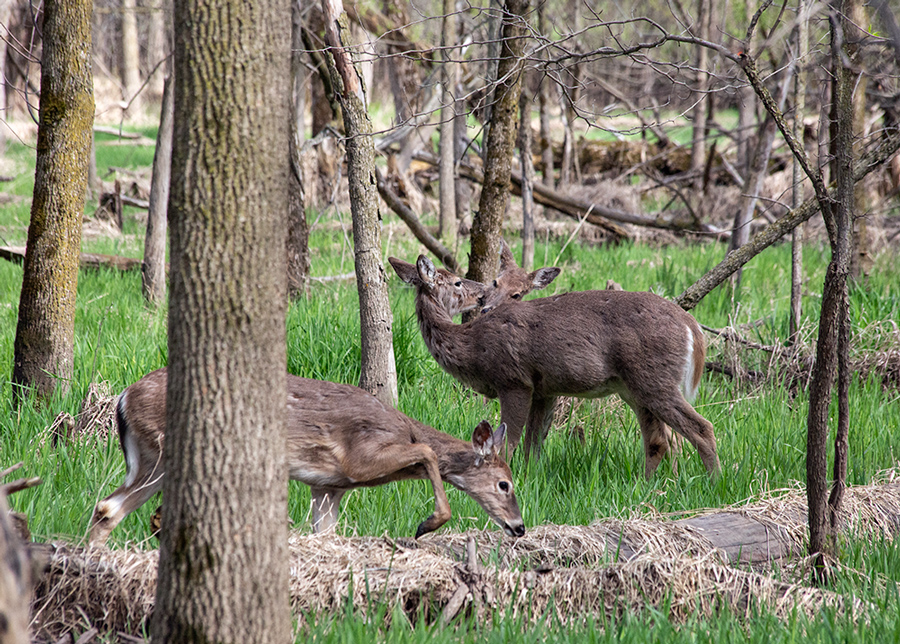

Since I was leading the group, and not wearing my waders, I didn’t venture into the marsh. But I have done so in the past. Here is how I described one such foray in, Urban Wilderness: Exploring a Metropolitan Watershed, my book about the Menomonee River:
“Last year, an unusually dry summer made it easy to navigate both banks of the river. Hikers and bikers trod hard-packed paths through tall, burned grasses and spiky, dun-colored garlic mustard. This year, the east bank has been abandoned. The land dips into marsh. There are no trails here now. This lush green environment can be experienced only by wading: literal immersion. One must leave behind suburban paths and become a solitary explorer in soggy seclusion. I struggle to the center of the slough, knee-deep in water, invigorated by the wild aspect of the landscape. Startled by my inexplicable intrusion into their accustomed refuge, three deer stare briefly, then bound off into wooded recesses. As the splash of their disappearance fades, a profound stillness ensues. My feet slowly settle in the gurgling mire. A primordial spirit pervades the scene. I want to preserve the power of the moment. Instead of recording it with my camera I simply breathe.”
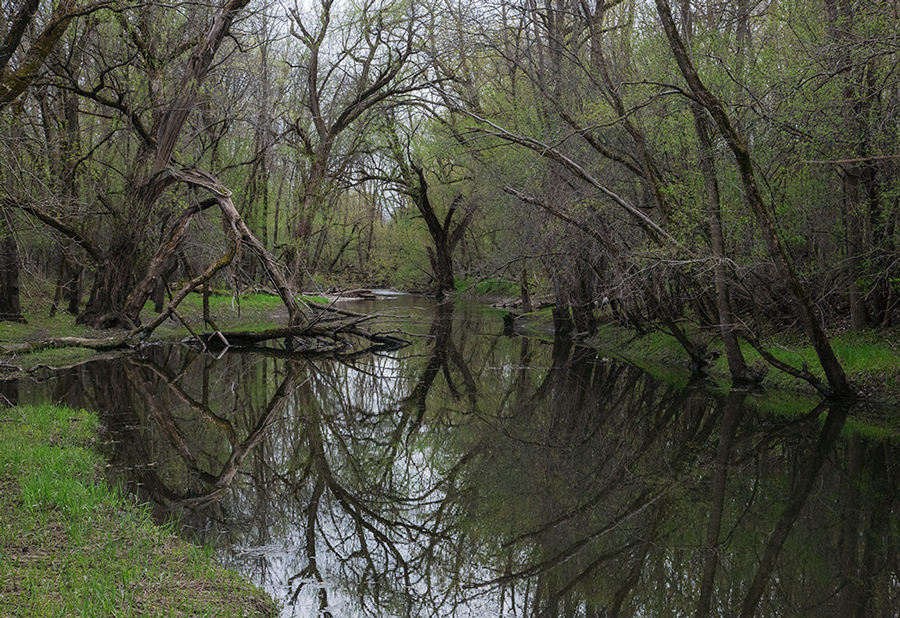
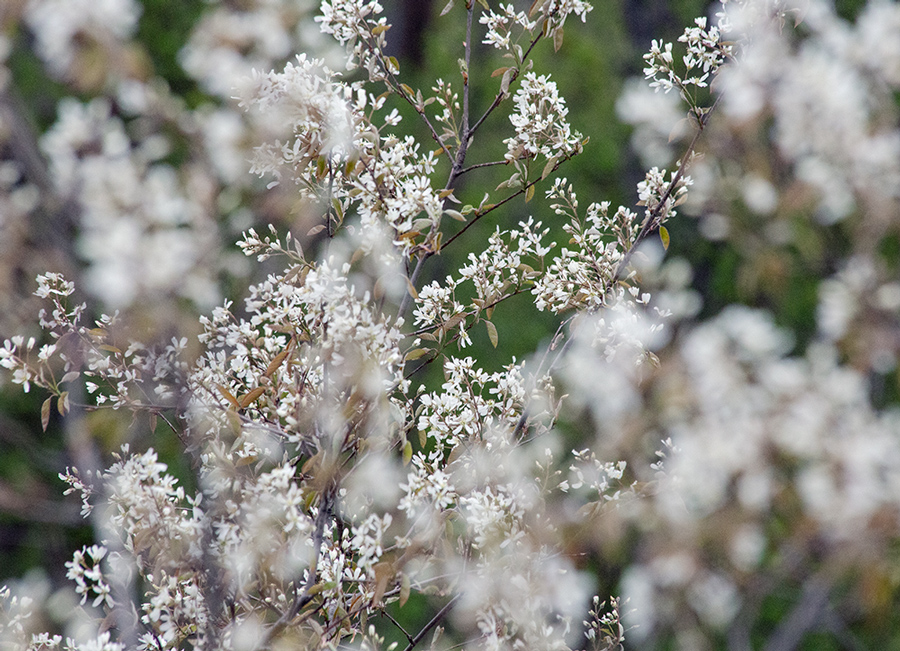
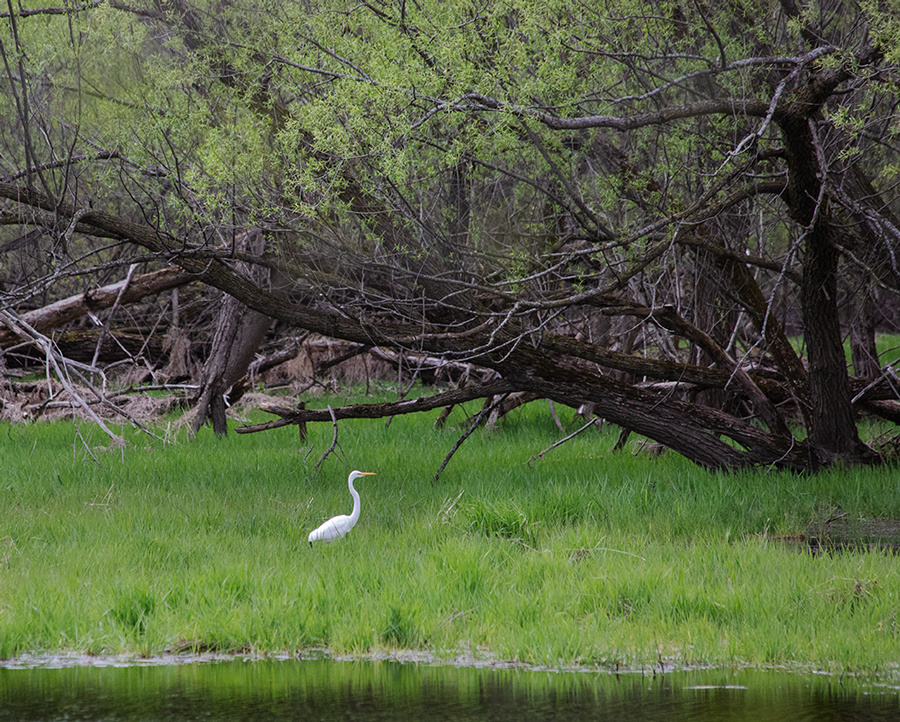
At Hampton Avenue we cross to the west side of the river—the rugged side. A few of our party turn back at this point, but the majority press on. Although we didn’t have time to go farther upstream, I shared a story about the next stretch of the Menomonee River, which leads to an area so “remote” that at one time it was used for illegal paintball games.
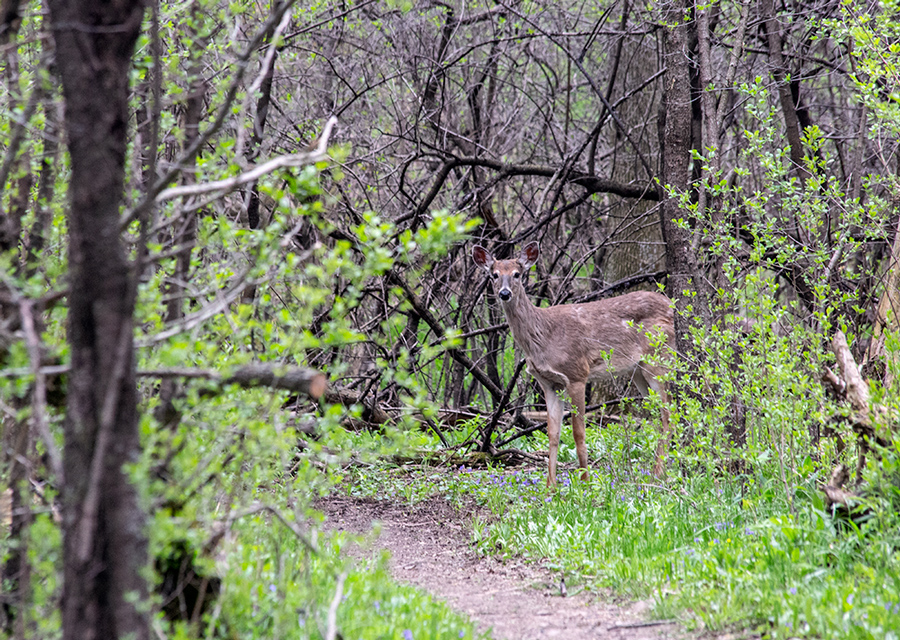
Back down on the riverside, we spot signage that lets us know we might be sharing the trail with mountain bikes. This is the Oak Hill Mountain Bike Trail, one of three official Milwaukee County mountain bike trails along the Menomonee River. This makes Wauwatosa a mountain biking hotspot, since there are only five mountain bike trails in all of Milwaukee County. As we walked we noted a neat wooden bridge over a drainage ditch, a rock-armored dip at a stream crossing and other signs of careful maintenance. Much of the trail edges had even been recently mowed. These trails are maintained for Milwaukee County by Metro Mountain Bikers.
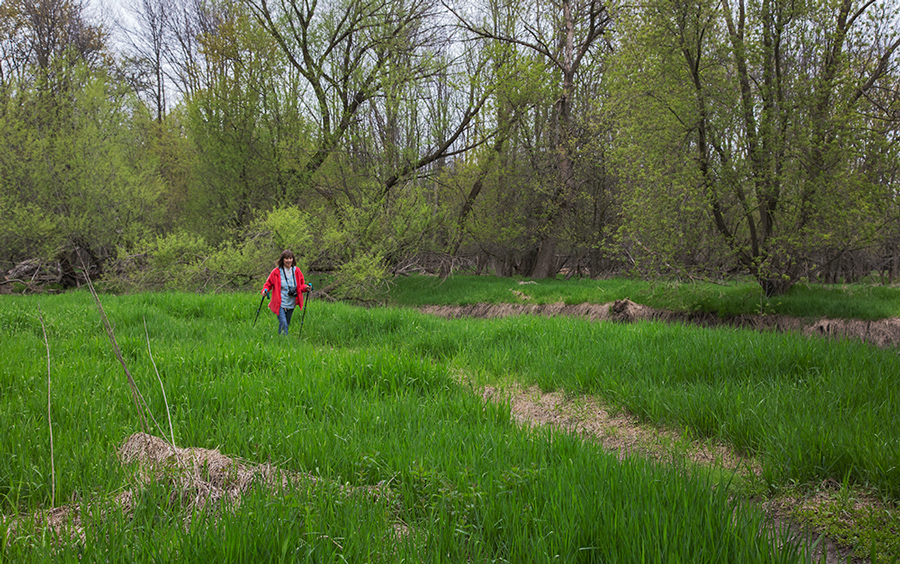
Riding in wet conditions is discouraged, because it tears up the trail, and we don’t encounter any bikers on our hike down the west side of the river.

We do spot, at one point, a very large tepee-like structure of wooden sticks on the opposite bank. While I like to think of these “forts” in the woods as being the work of youngsters—they remind me of my own youthful escapades—their real purpose is likely partying away from the prying eyes of authorities. Fortunately, this one has not been littered with beer cans or other trash—for now.
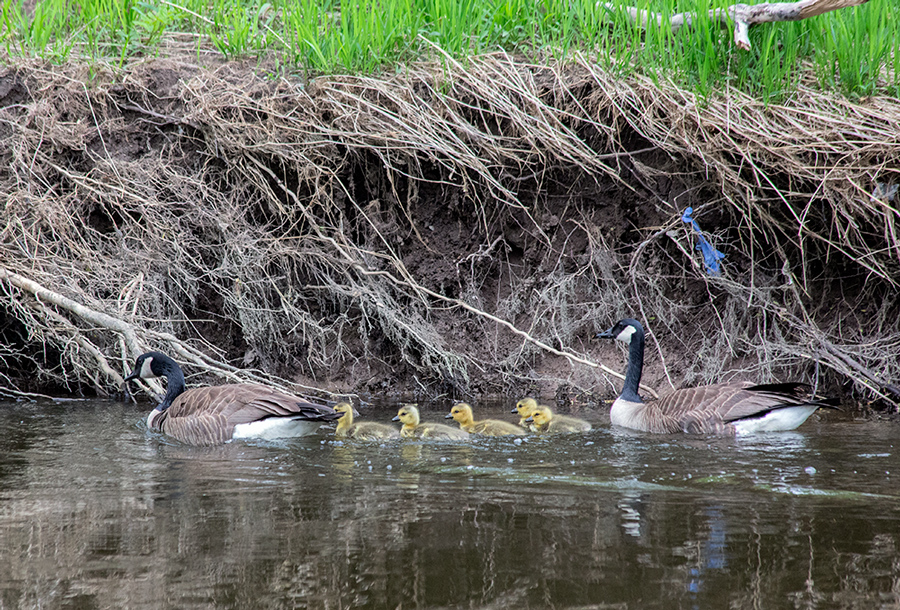

Along with the woodland wildflowers we note evidence of frequent flooding in this area. Along with its appealing wilderness character, one of the other virtues of preserving this floodplain corridor is its usefulness in slowing down high waters after storms and heavy rain. This helps reduce flooding of neighborhoods downstream, something long-time residents of Wauwatosa know all too well.

Our hike ends on a sad note. As we make our way back across the Menomonee River on the Capitol Drive bridge, the carcass of a deer on the roadside brings us back abruptly to the reality that what we’ve just experienced is an urban wilderness. We are reminded not only of the fragility of life itself, but also of the importance of places like the Menomonee River Parkway where our experience of nature and wildlife is so much more than what we can see from our cars.
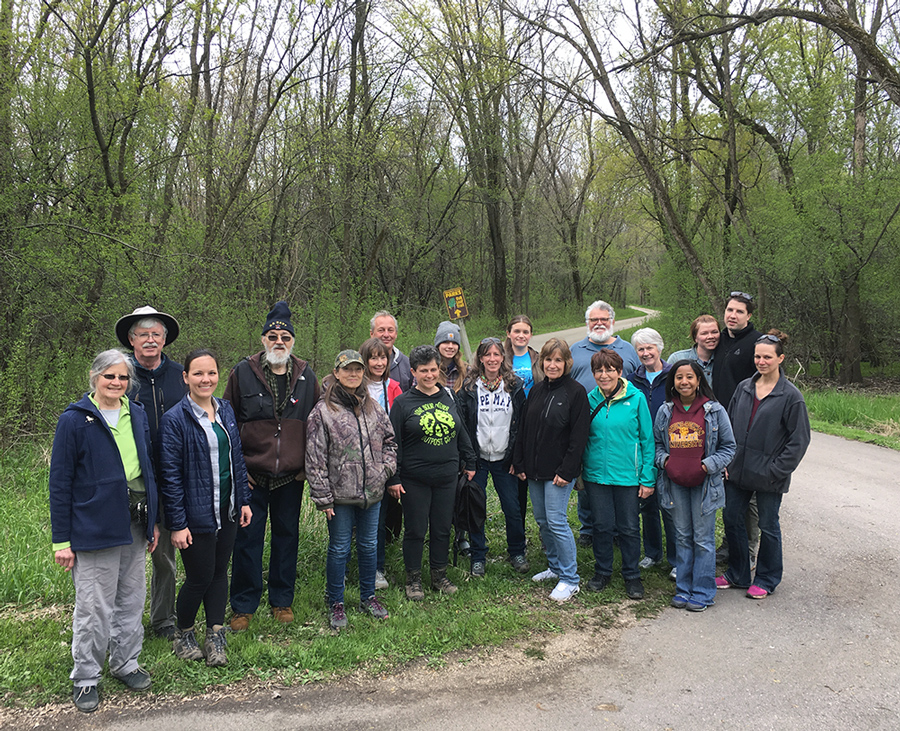
Thank you Jane’s Walk MKE for providing the structure and opportunity for our walk on the wild side of Milwaukee!
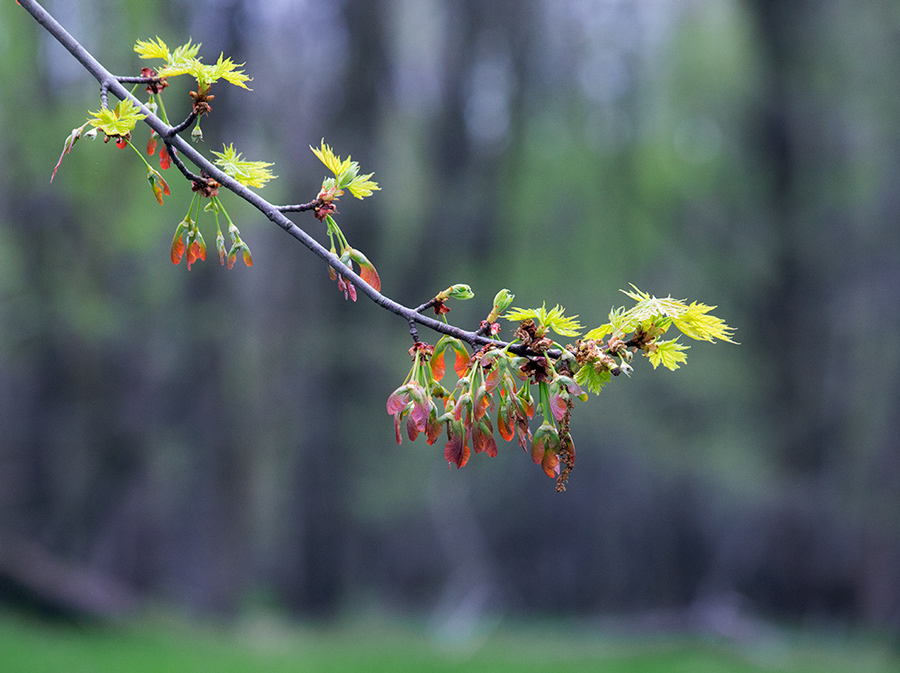
Eddee Daniel is a Wauwatosa resident, writer and photographer; author of Urban Wilderness: Exploring a Metropolitan Watershed; board member of Preserve Our Parks and project director of A Wealth of Nature. Website: eddeedaniel.com.

